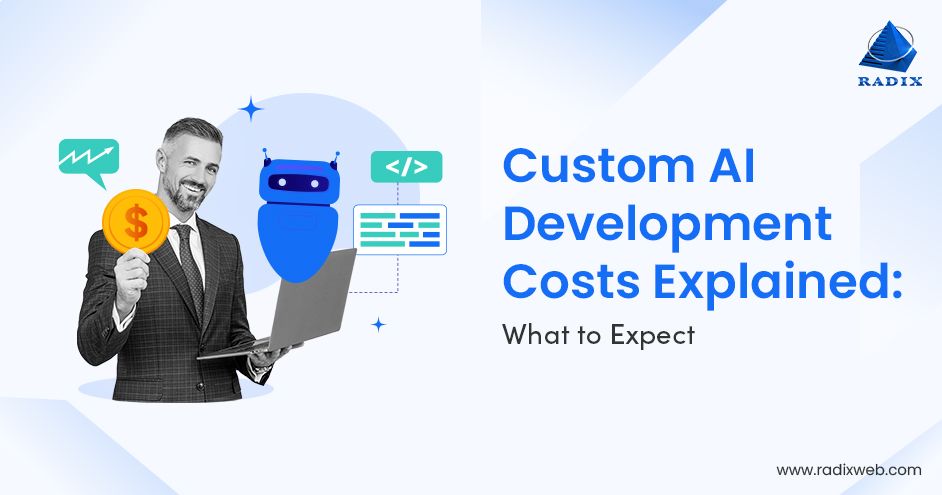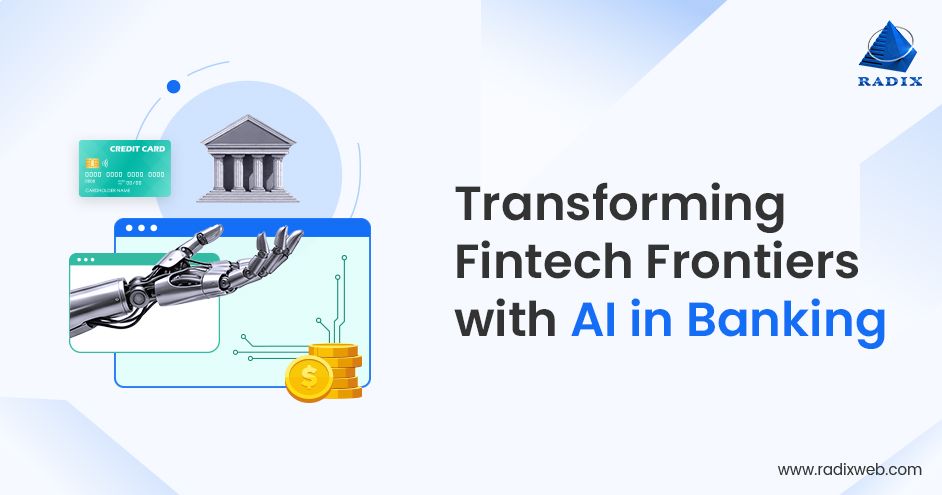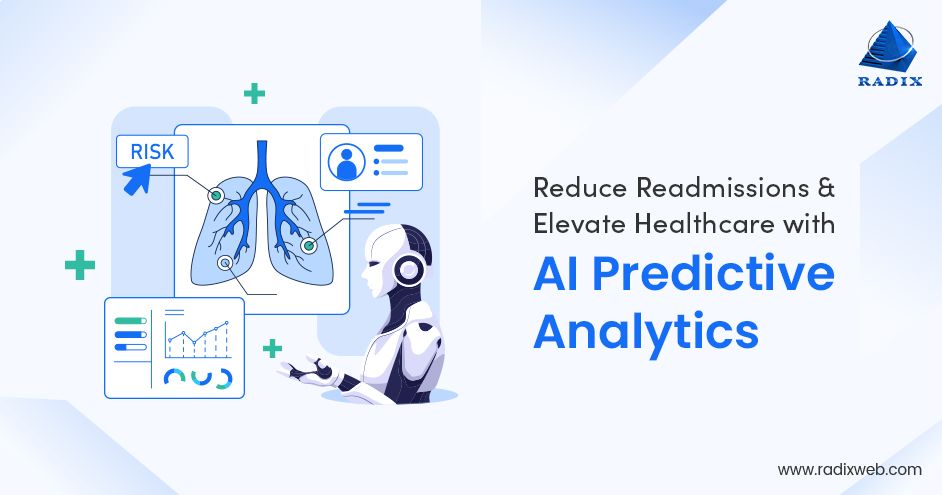
Discover what’s next for AI in healthcare in 2026 - Get Access to the Full Report
What is SaaS? Top 8 Benefits of Software as a Service for Your Business


Have you ever wondered what does SaaS stand for?
"Software as a Service” is an application distribution model where cloud providers host apps and make them available to users via the internet.
The explosion of SaaS adoption has been happening at a rapid pace in the last decade, and that too, mostly outside the IT industry. And now, with the cloud burst (pun intended), we are literally at its tipping point where SaaS-aided designs (CAD) and PML apps can give their on-premise counterparts a run for their money!
Now, there’s a question – what exactly is SaaS in cloud computing, and why should you care about it for your business?
Well, SaaS, like many other enterprise software development trends, has become a buzzword that is confusing and hard to ignore. This software delivery method introduces you to the latest forefront of technology within a pre-determined budget. With complete professional support, cloud computing or SaaS helps your enterprise make the most of costs while being highly flexible.
As a renowned SaaS product development company, we have composed a few significant advantages that SaaS integration will provide for your enterprise to bloom in the right direction.
What is Software as a Service (SaaS)?
Software as a Service is a set of cloud-based and on-demand software that delivers applications to the end-users. It is a software licensing model that holds several benefits if implemented in your business. The SaaS platform is a subscription-based model which you can conveniently access using an internet browser. The Saas software development stages include design, development, testing, launching, and maintenance. The testing phase includes security, performance, scalability, and capacity.
So far, a competent SaaS development company can successfully deliver applications in sectors like:
- Mobile applications
- HR management software
- Payroll and accounting software
- Resource planning software
- CRM software
- Performance management
Here are two important factors that differentiate SaaS technology from traditional on-premise software delivery models:
Software as a Service (SaaS) is a cloud-based service that doesn’t require extensive hardware for deployment as SaaS providers can assist with troubleshooting. You don’t have to outsource any IT responsibilities to maintain and install in-house software.
SaaS is an affordable software delivery method offering a subscription-based pricing model per month/year, including software license, support, and other fees. Thus, the SaaS pricing model differs from traditional on-premise software that you can usually acquire as a one-time perpetual license.
In short, SaaS has various potential advantages for you to ditch those traditional on-premise software models. The more you know about it, the more you will recognize its importance.
Differences Between SaaS Platform and On-Premise Software
Almost all traditional on-premise software apps are purchased with a usage license by paying for the whole package upfront. Typically, software licenses are limited to only one user or device, whether it's bundled with the hardware or happens to be a standalone Purchase. To get started with traditional software, the user has to pay a hefty price once and then can continue to use the software by installing it on his device.
Conversely, a SaaS application development company allows businesses and users to subscribe to the service on a monthly or annual basis without having to pay large amounts of money in licensing fees. A significant advantage that SaaS holds over traditional software delivery methods is that the business or user can discontinue the subscription when the service is no longer required.
This feature saves companies and users from falling prey to permanent contracts and licensing issues. Given that SaaS operates over the cloud, apps are updated in the cloud resulting in the business or user saving valuable resources that would have been spent on updating each computer.
The SaaS platform is a deviation from the convention of purchasing software, and yet it can provide significant advantages to an enterprise that utilizes it. Today as the adoption of cloud computing is gaining momentum, software providers worldwide are adding SaaS capabilities to their portfolio, resulting in huge gains for companies that adopt the service. Check out the eight top benefits of SaaS in the next section.
Benefits of SaaS (Software as a Service)
You can leverage many benefits if you move your infrastructure to the cloud. While talking about what is SaaS software, one thing you must know is that it will surely reduce your costs. So, let’s go through each advantage of SaaS for your business.
1. Cost-Effective
Choosing SaaS can result in significant savings for a variety of reasons. Firstly, SaaS eliminates the upfront costs the user has to pay for purchase and installation. Ongoing costs like maintenance and upgrades are also no longer a factor. Instead of spending large amounts of money on hardware resources, SaaS apps are easily downloadable and virtually maintenance-free from the user’s end.
Secondly, the pay-as-you-go SaaS pricing model allows businesses to reduce costs, given that they only have to pay for the software they are using and not wasting resources on unused licensing.
For small businesses, SaaS is truly a boon, given that these businesses now have access to high-powered software, which is not only expensive but unobtainable through conventional methods of purchase because of budgetary constraints. The subscription-based nature of SaaS platforms eliminates the financial risk that comes along with expensive software.
SaaS is a deployment model that handles IT infrastructure complexities and deploys business apps without the time and resource-consuming hardware maintenance. All of this is the responsibility of your SaaS vendor, allowing businesses to choose the right OS, free up resources, and redirect them towards other processes.
2. Time Management
Time is money. Thankfully SaaS can help businesses in saving both. For SaaS applications, installation requires merely an internet connection and the acquisition of a log-in. Moreover, maintenance responsibilities that come with traditional software are shifted to the vendor in the case of SaaS, thus eliminating downtime or extra work hours required to upgrade standard software.
3. Scalability and Accessibility
Yet another feature of SaaS is that it offers fantastic flexibility. Since the software is externally hosted by the SaaS application development company, businesses can change their usage plan without having to worry about giving advance notice. Furthermore, SaaS solutions can be accessed from anywhere in the world, given their web-based use. With SaaS, users are able to access their data and work effectively from anywhere, making the situation a lot easier for home workers and people who work at multiple sites.

4. High Compatibility
In the traditional method of software installation, updates can be very time-consuming and expensive. Compatibility issues can arise because of version discrepancies between members of the workforce. However, with SaaS technology, users simply log in to the latest upgraded version of their SaaS solution. It is the SaaS vendor’s responsibility to manage updates and upgrades, removing the need to install patches.
SaaS assures that the end-user will always have access to the most up-to-date version of the software. Software as a service definition includes eliminating problems like software maintenance and incompatibility, thus providing your enterprise with streamlined focus and higher productivity.
5. Guaranteed Levels of Service, backups and data recovery
Unlike traditional software, SaaS gives the user a guarantee on how it will well it work. At Radixweb, we guarantee our subscribers that all applications will be available 99.5% of the time.
It is common knowledge that with traditional software unless an expensive automated solution is deployed, the process of data backups on a weekly basis can be very labor-intensive. Enterprises can completely remove the task of data backups with SaaS as it supports automated backups without user intervention, thus ensuring data integrity.
As per reports, the overall size of the public SaaS sector is expected to hit $157 billion in 2020. Click To Tweet
6. Amplified Security
In most situations, SaaS solutions can keep an organization's business information safer than traditional software. For instance, at Radixweb, we run multiple geographically separated data centers, which contact the IT infrastructure to deliver our SaaS applications. In the unfortunate event that an obstacle appears in one center, the other data centers continue delivering our services.
7. High Adoption Rates
It is noteworthy that since SaaS solutions are delivered over the web, they usually have much smaller learning involved since employees are already used to working on the internet, resulting in rapid adoption by the workforce.
8. Try it before you buy it
Talking about what is SaaS company, those service providers offer free trials of the products and that too of the full version. This means that businesses can take advantage of ‘prep time’ to see gauge the viability of the solution and how well it works with their organization programs before making any investment in the systems.
Is Your Business Ready for a SaaS Platform?
If you are planning to implement cloud infrastructure, then there may be chances that your business is not suited for SaaS. But if you have excellent software, a loyal client base, and a recurring payment processor, well, then you are on your way to adopting the SaaS model.
The SaaS platform is a suitable business model for both clients and software providers if you properly deploy it. It provides an easy-to-use system for customers while allowing your business to improve your product and easily communicate those changes to customers. So, if you want to enhance your business output and take it to the next level, SaaS is a suitable model.
Takeaways-
- The SaaS service provider hosts the application and makes it available to businesses through the internet
- SaaS supports Rapid deployment, easy to set up, low initial cost, and ready-made apps
- SaaS is very Stable because of large IT infrastructure and resources of the vendor
- SaaS removes an organization's need to make expensive hardware purchases with virtually no software maintenance expenses
- SaaS pricing models are available on monthly/annual/bi-annual basis
- Updates and troubleshooting are the responsibility of the SaaS service provider
- SaaS can be used for business applications such as CRM, accounting, sales and more
- SaaS solutions are based on multitenant architecture based which means that all clients have a single version of the application
- SaaS offers low time to development and rapid prototyping
- Even if disaster strikes a business's premises, their data remains safe given that Saas is cloud-based
- SaaS has very high adoption rates
- SaaS offers all the inherent flexibility of cloud-based services
- SaaS solutions make budgeting a lot easier, by allowing the business to shift costs to opex (ongoing operating expense)
- Given that SaaS apps are multi-platform compatible, they are accessible from anywhere through the internet, on all devices
- The highly scalable nature of SaaS allows businesses to easily upgrade SaaS offerings as they grow
- Even organizations with a limited IT staff can rely on a SaaS application development company for updates and maintenance
- SaaS updates are made available to all clients at the same time
Conclusion
Features like easy upgrades, lower costs, and better scalability are some of the top reasons most businesses believe SaaS is the future of computing. Many small and medium enterprises are now looking to ‘rent’ software they require instead of substantial investments in hardware and traditional software licenses.
SaaS is a revolutionary approach to delivering applications that allows businesses not to worry about upgrades, patches, and complicated deployment processes. The greater scalability and flexibility of SaaS means that enterprises can scale as they grow.
Cloud computing is the future, and SaaS technology, in particular, presents a brilliant opportunity for businesses. SaaS implementation done right can achieve increased and sustainable revenues and help companies meet their requirements as they grow.
With over two decades of experience and excellence backing us up and having served 2900+ clients spread across 25 countries; with regards to helping clients with practical and future-ready Saas solutions, Radixweb is an experienced SaaS development service provider that can assist you in achieving your business objectives with minimum investment, maximum efficiency and targeted software solutions.
Interested? Contact us for a brief about how we can help your business reach its objectives with our robust SaaS services portfolio.
Ready to brush up on something new? We've got more to read right this way.





